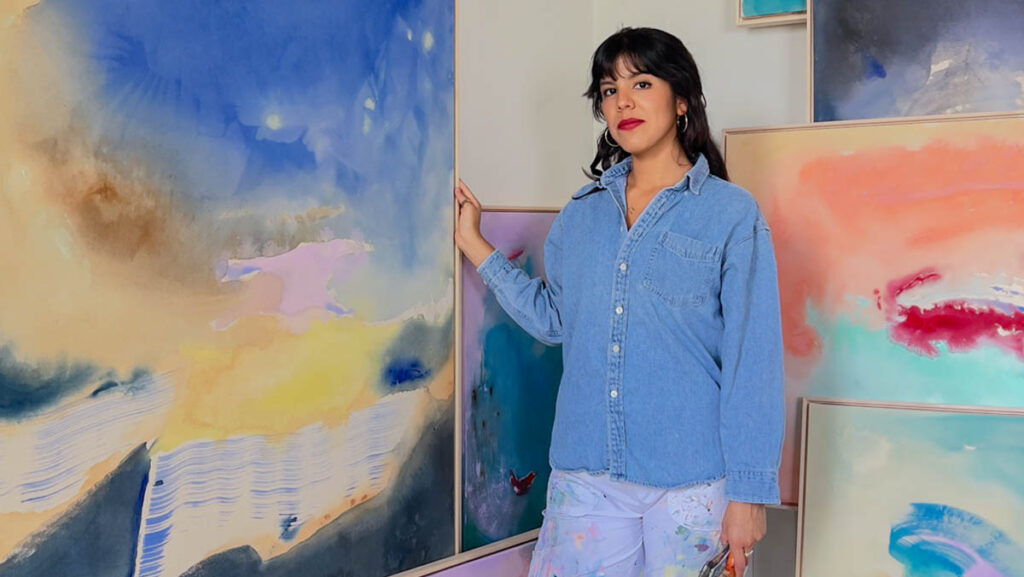
You have been studying fashion at Central Saint Martins in London. Tell us how it came to it.
Growing up, I felt Vienna was a little tight for me. I come from a loving but conservative background, and I knew I had to emancipate myself from that a little bit. I was lucky to have my parent’s support in this direction. Studying Art and Design in the UK, you need to first do a one-year-long Art Foundation program. I did mine in Cambridge when I was nineteen; at that point, I wanted to do theater and costume design and was not thinking about fashion. In Cambridge, it was my first time abroad, living alone, and it was a real awakening. I slipped into Fashion design as there were too few kids applying for the Theater program, and I loved it from the very first minute as I saw endless opportunities and a real chance to express myself creatively. I decided to apply to CSM and Antwerp, where the head professor at the fashion department was Walter Van Beirendonck at the time. I passed both entries but opted for CSM, drawn to the vibrant atmosphere and fun of London.
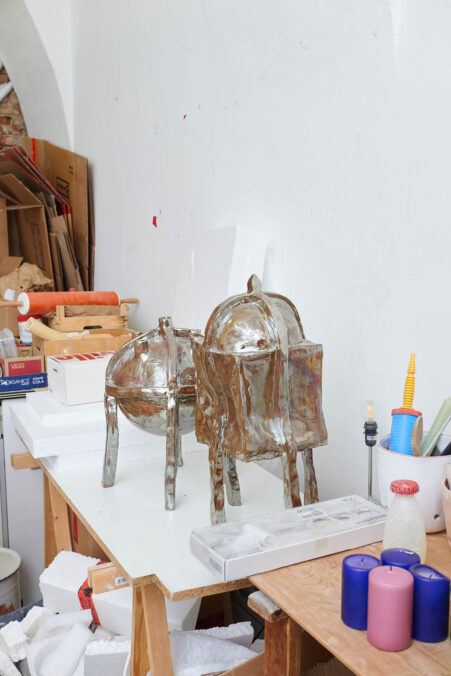
Onka Allmayer-Beck 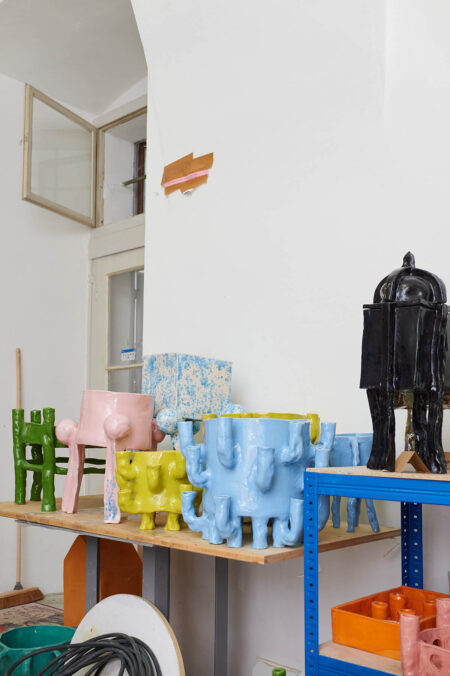
Onka Allmayer-Beck
Who was your main professor at CSM, and how did that experience influence your later work?
Howard Tangye was the course director of Womens Wear Design. At that time, I was very slim and modeled a lot for the MA Students; Louise Wilson was the Director of the Program, and she was the iconic MA professor. I still feel the most I learned at CSM was from her and the countless MA crit’s I was part of as a model. My year was full of very cool and quirky people, such as Christopher Kane and many others still working in the industry today. We had the feeling that everything was possible! When I moved to Milan, it was then that I felt what the reality of the fashion business was. I stayed in fashion for 12 years. I started at Carol Christian Poell -CCP, which was flamboyant and very creative, and did my last 5 years for Giorgio Armani, which was much more commercial.
How did it come to shoes?
Working for CCP was all about leather, how things are made, and how they work. Leather was, for me, my first real passion. In my eyes, leather and clay are very similar; both are natural materials that can be manipulated to a certain point, but being natural materials, you have to respect their own characteristics. They are both very much alive, and this is still very impressive for me today.
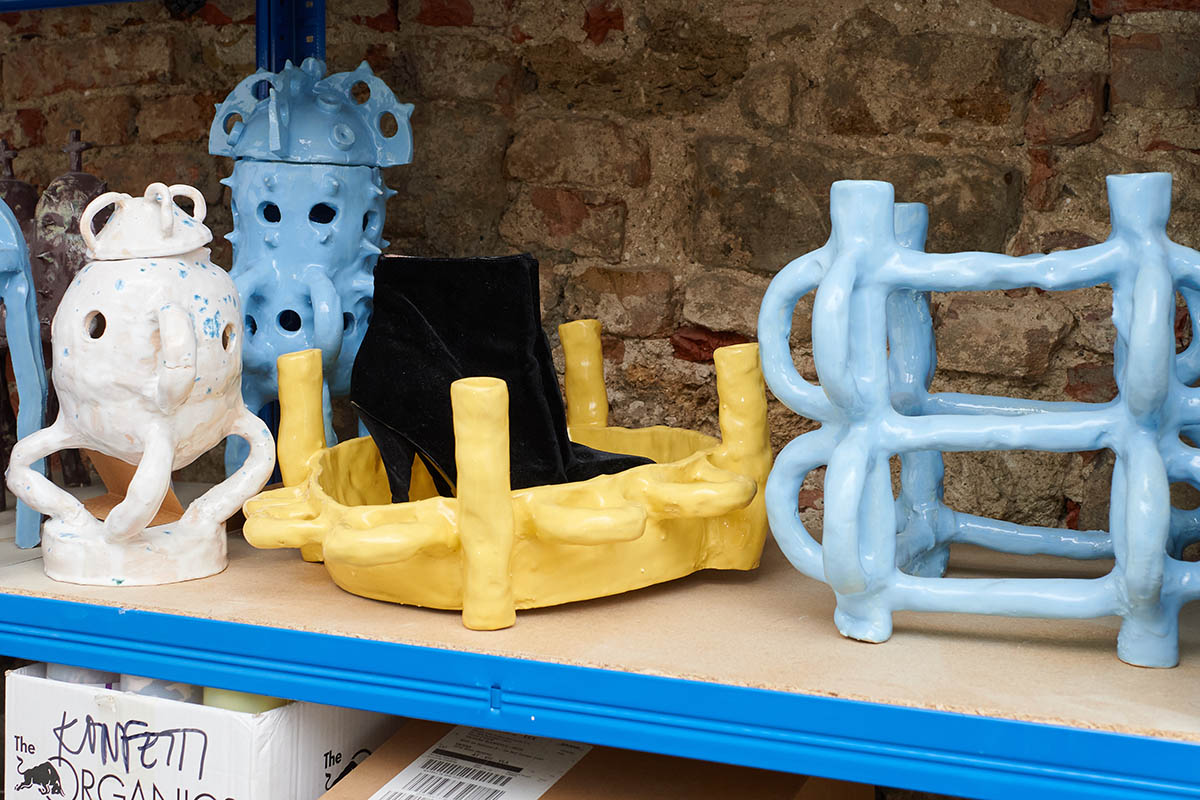
Do you think that exploring the limitations of materials—so, the limitations of leather—is kind of influencing how you treat clay now?
Ceramics always surprise me! I feel like I am fighting the law of physics through my compositions every day. Yeah, I think it has very strong connections; I leave space for the material to move on its own and settle into its natural position. I still apply the principles of what I learned at CSM every day. They taught you to find your artistic voice, sourcing your own motivation and your own ideas; they really taught you how to look, and look at something and extract from it, like a color or a shape. This is nothing you use excessively in industrial or commercial jobs, but it is planted deep inside you. I use it every day in my work and daily life.
I can imagine that working in such a big house such as Armani can also be limiting due to the need for commercial success, but could you share with us a fun project you did there?
Doing fashion shows is always fun, and we did lots of extra projects. We did all of Lady Gaga’s Monster Ball tour—you can still look the shoes up; it was fun and amazing; there we had total creative freedom and did crazy things!
Was coming back to live and work in Vienna initiated by a job opportunity or your personal decision?
When I stopped working in fashion, I still stayed in Milan for 2 years as a freelancer, but at this moment, freelance was still very much not a thing in Milan and by far not as big as it is now. I did illustrations for magazines and different clients, portraits, and commissions, and started painting on clay plates and bowls. Ceramics was becoming an interest; I found a maestro, and he taught me everything about clay and pottery from the basics onwards.
When I came back to Vienna, thankfully, I was not the same person who left sixteen years ago. I was excited to be back. I immediately bought the Year Subscription for the Burgtheater and Akademietheater, and I started going to the opera again. It was just nice to be back.
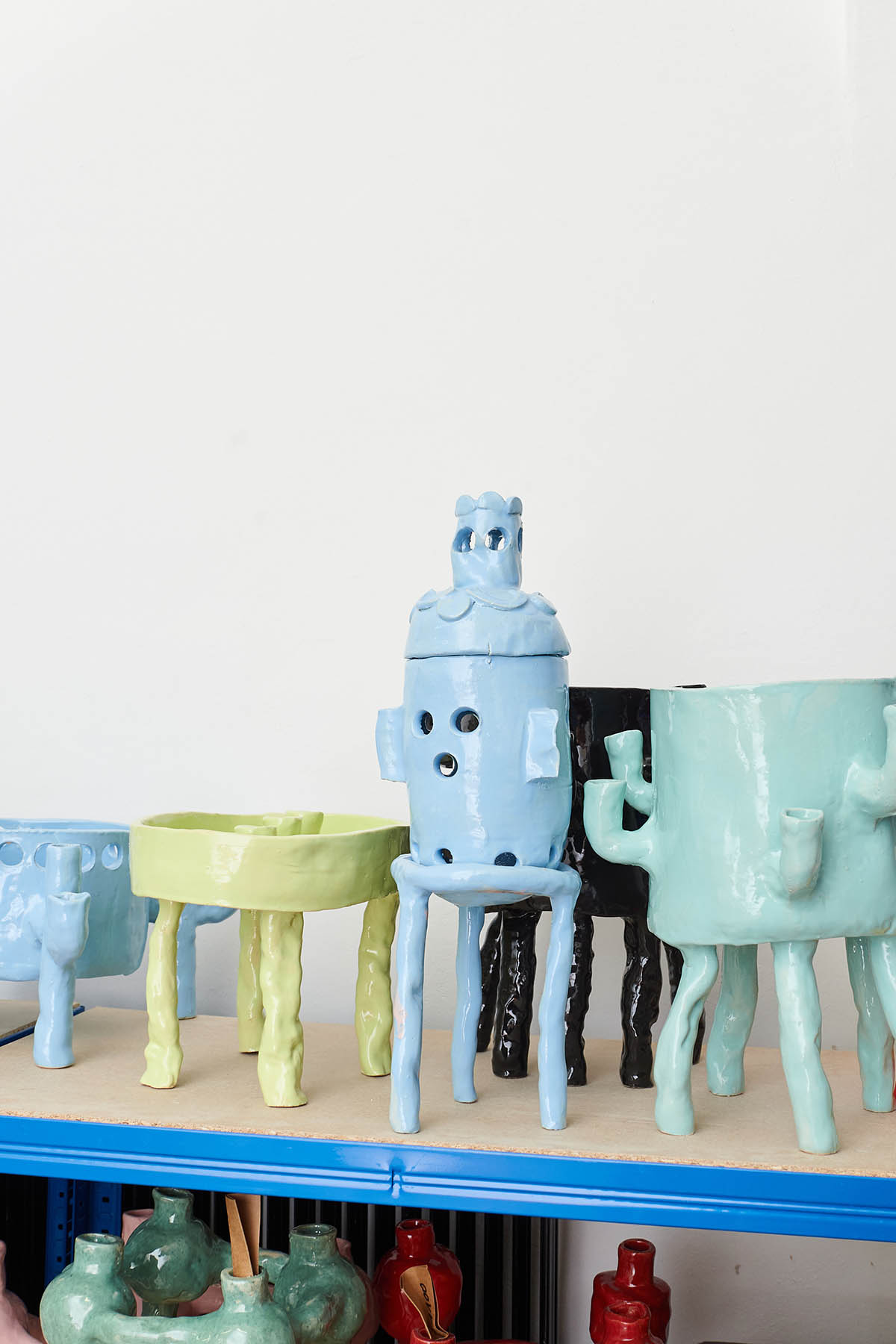
Vienna is full of very good theatres, and it is famous for its City Opera. Could that also be something that inspired you to be interested in stage design and costume?
I for sure am! My parents always had the „Year Subscription“ for theatre and concerts; with this, I could see almost every production. When I was a teenager, I always ended up going with my parents. And I saw very avant-garde theatre in Vienna during the late 1990s. I was like a sponge, and everything I saw was influencing me. And I feel Vienna is still an amazing city for theatre. Anything performed on a stage is always magical to me.
How did you decide to find yourself a ceramic studio in Vienna and start working on ceramics as your full-time job?
I was back in Austria for some time, and I was mainly drawing, but clay was very much in the back of my head. I went to the country during the summer. I started making shapes out of clay, just something for myself, to my taste and liking, without thinking of results or having this tension of trying to fulfill my boss or client’s needs, and like this, my ceramic shapes came to life. At the time, it was a very strong moment for Instagram, and I was posting a lot, but as you did at the time about my personal life. I posted the ceramics—not with the intention to sell or ever thinking what a big part of my life this would become. I hit a nerve, and from the first 5 I ever made, one exploded in the kiln, one had a glaze gone very bad, and three immediately sold. I am using it as a platform to connect and present my work; for me, it worked wonders.
Your ceramic objects are also little personas. Are they coming in editions as well?
They all have an attitude while standing; yes, they are side-eyeing me! Even if they come as an edition, they are never the same because everything is handmade by me. Even if I work commissioned for restaurants, for example, and they order thirty pieces, they will be slightly different, even if it’s a series.
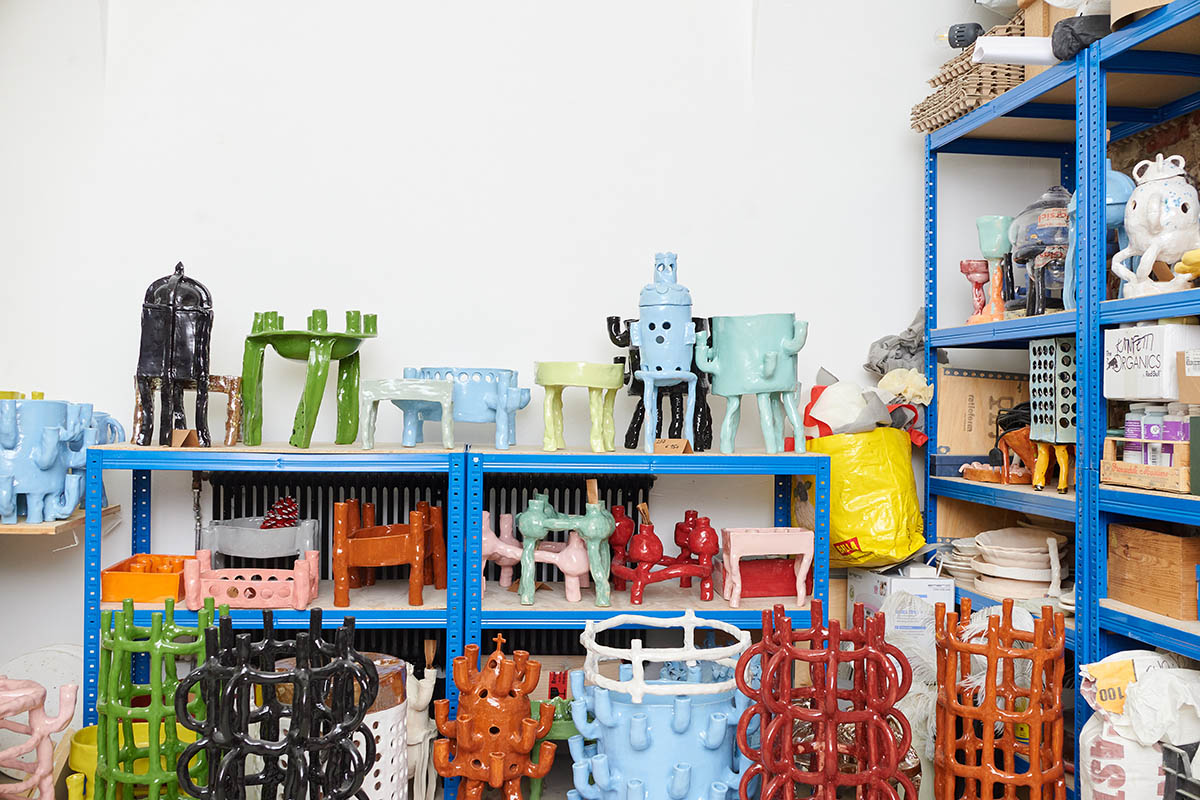
Onka Allmayer-Beck 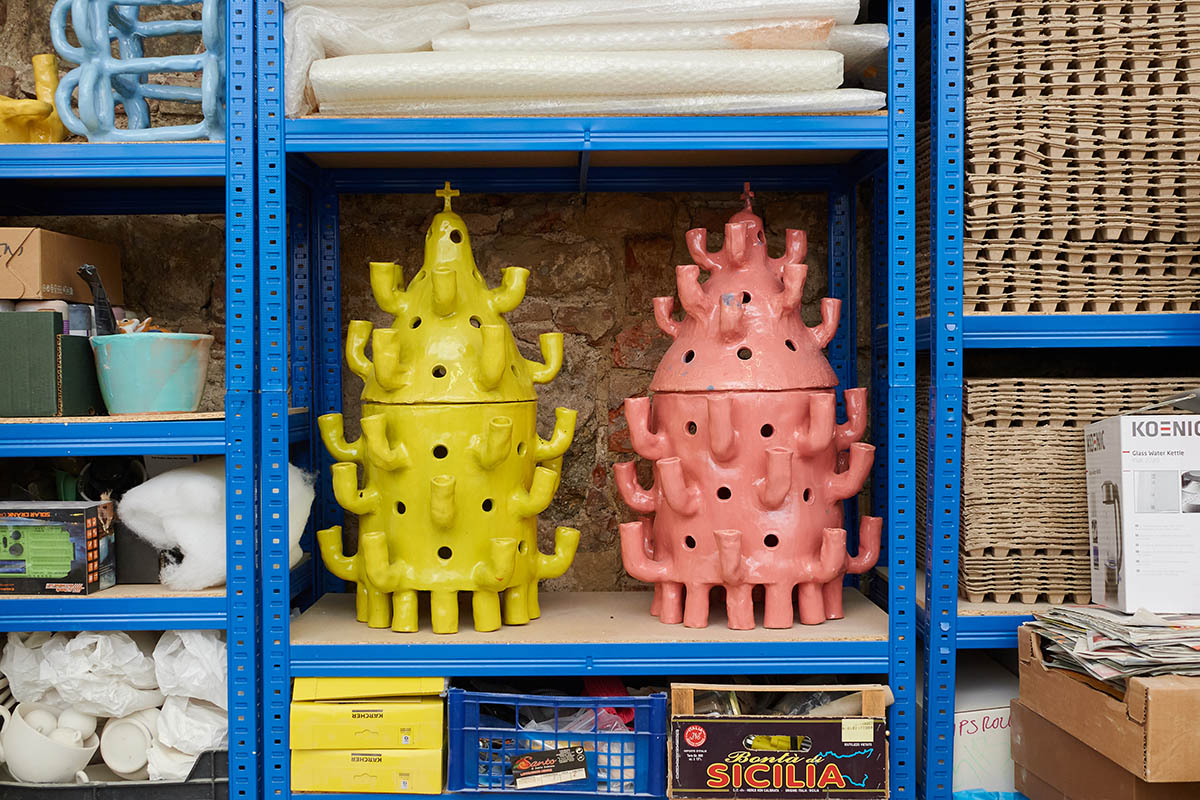
Onka Allmayer-Beck
Design versus art? How do you feel about your work? Where does it “fit” more?
Twenty years ago at CSM, my dissertation was about design versus art. I don’t want to pose this question to myself; it’s not something that interests me. I find it a bit old-fashioned to decide that you have to be a designer or an artist. My objects were started so that they could be used, and I also very much want to de-stigmatize decoration. The Austrian scene can often be too conceptual and very male. I like to say that what I am making is a centerpiece, and you can put a flower in it on top—but not even in an ironic way! They are like my little children; even if it sounds funny, I spend so much time with each one making them.
Are you a fashion designer and/or artist? How would you introduce yourself?
I don’t think I have to choose. I don’t see the difference, like I was first a fashion designer, and now I am doing ceramics. For me, it is all the same—just a continuation. If you were to approach me on the street and inquire, „Who are you?“ my response would be an artist, though I do possess my design card if needed.
Interaction with your pieces is something that happens naturally; how do you collect impressions?
People always send me photographs of my pieces installed in their homes or spaces. With their own personal arrangements, I love this. It is very interesting to see how people react differently to my objects and how they incorporate them into their space. I feel my objects are my responsibility here while they are with me in the studio, but as soon as they walk out of the door, they develop their own lives. It is also interesting how people are reacting to them, as they are little kittens or puppies, and you are coming and choosing the one that fits with you. I often feel that rather than buying a piece of art, people come and choose a flatmate. Seeing them at people’s houses, it is astonishing to me how well they fit. It is very important to me to show my work in person, and when I invite people to touch and feel it, a personal connection is happening.
Each one is made so that it can stand and work on its own as it is, but then you can add to it flowers, candles, fruit, and your baby’s toys. I get sent all sorts of pictures, people go crazy with them, and I love the interaction.
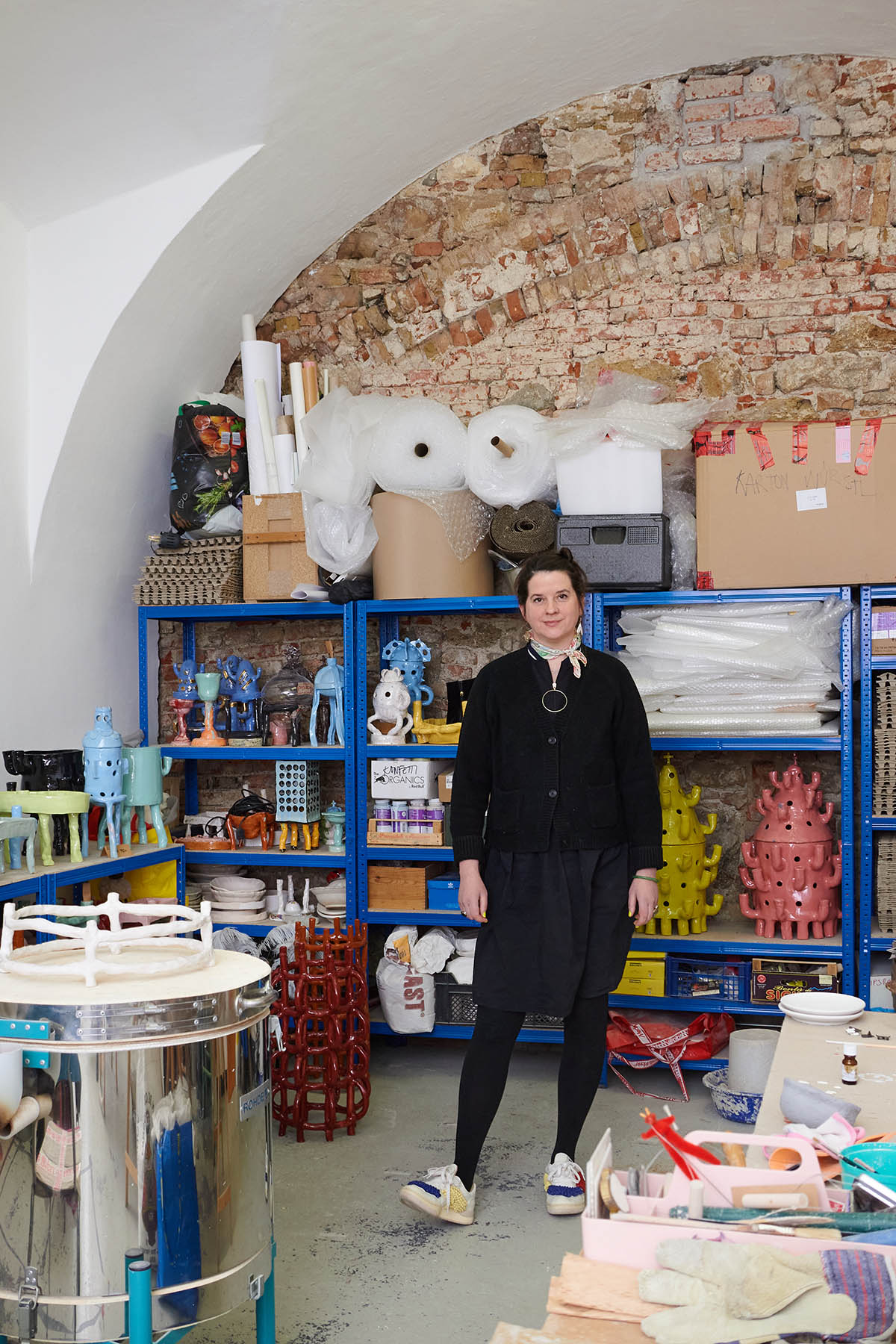
Color scheme is something that changes always in your work; how do you decide on it?
Because of the shape they have, they still look very lively, even if they are monochromatic. The way the color hits the form, the reflection of the light, and the angles—even if it’s not the ceramic traditional method of using colors—I feel it works! It looks like a fresh manicure!
Do you still draw?
Yeah, absolutely. My project for collaboration with Uber is indeed a drawing.
How did you come to the decision that you would present a drawing of yours and not a photograph or collage of your ceramics on Uber?
They discovered that I draw as well, and then we did some samples of different drawings. I had many ideas; I always draw by hand, and at the moment, I am learning sign language as well. And I thought an inclusive form of communication would be so cool. I didn’t realize at first that there is no general international sign language; I am learning the Austrian one, so the sign language is also connected to regions. I decided on drawing hands because I am all about hands. My work has always been handwork, so it is a small celebration of hands. What was also important was the whole concept of human touch, and since we are living in such tricky times, I thought everything should be softer, nicer, and friendlier.
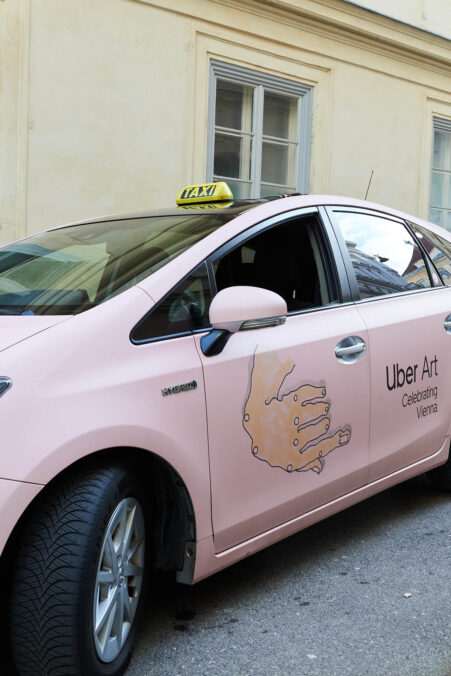
Onka Allmayer-Beck 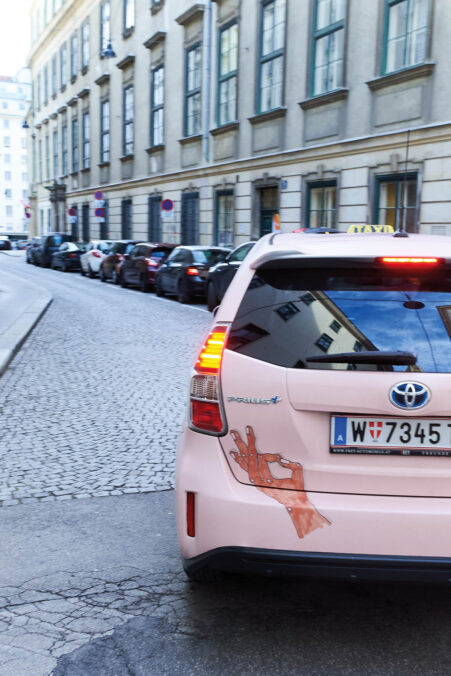
Onka Allmayer-Beck 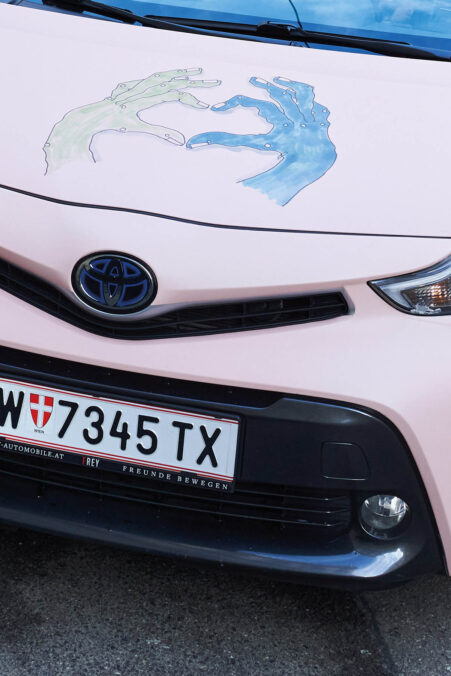
Onka Allmayer-Beck 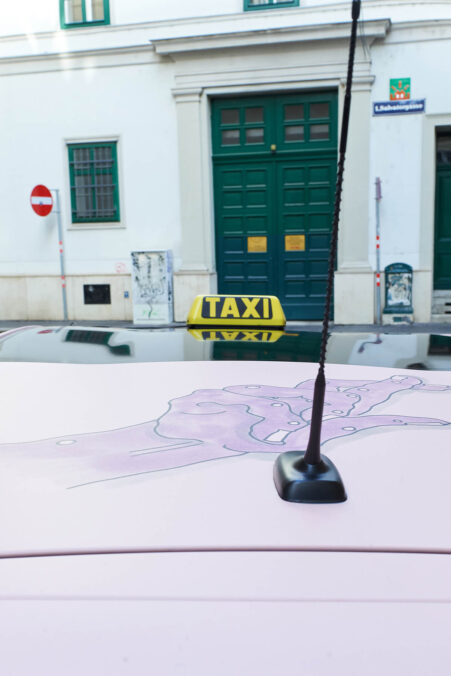
How was the production coming along?
We had to think of the 3D element of the whole project, and that the drawings will follow the form of the car. For me, the 3D positioning was quite easy. I did shoes for so many years, and I am building three-dimensional objects, so I can think and see 3D very well. It’s a huge sticker at the end, which I found fun!
Movement in this project is very important. How does it feel to have your art on vehicles? It is a beautiful gesture coming from Uber to the city of Vienna.
I love the idea that is going around; every time I call an Uber now, I think it could be mine. Three or four times, I received a picture of the Uber with my work on the street, and I think it’s lovely, positive, and peaceful to have something like this going around the city.
Your work has a huge range of mediums; when you would need to choose your favorite tool, what would it be?
I would say my most precious tool is keeping my naivety in check when it comes to my work, especially the economic side of it. Otherwise, I would just stop doing art today.
What are your dreams at the moment?
I still dream of doing stage and costume design for a play. With all my huge shapes, I just need an opportunity to collaborate with a theater on that level. But one day, I will do it!
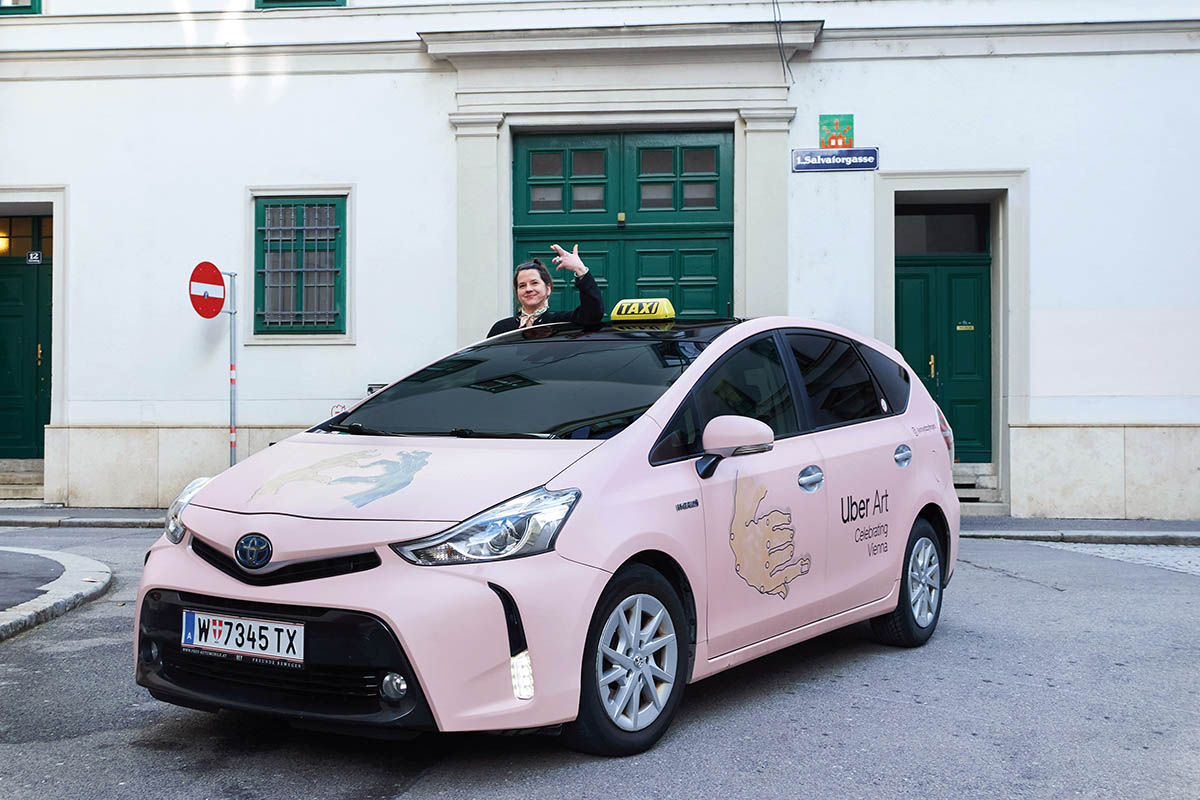
On the occasion of the Uber collaboration with artists, we asked Martin Essl, Head of Uber Austria, for a statement: „The idea of putting art and mobility in context with each other and promoting young art is something we at Uber have been doing for some time. I am happy that we have now realized this vision with our Uber Art cars in Vienna. For us, art and the city simply belong together, like modern mobility and Uber. The artistic design of our partner vehicles offers added value for our drivers through increased visibility and serves as a platform for artists to present their work to a broader audience in urban spaces. This unique fusion of art and mobility creates an extraordinary experience not only for passengers but for everyone who is out and about in Vienna and sees an Uber Art. For us, it’s not just about connecting places, but also about touching people with art and culture.“ More about this project you can find here.
Onka Allmayer-Beck – www.onkaallmayerbeck.com, www.instagram.com/onxydizzyfingers/
TheArtGorgeous is a media group that takes a fresh and entertaining perspective on the global art world, making it accessible, fun and inclusive for everyone. As a media company with a creative agency division, we develop innovative concepts and strategies to create captivating content for our clients, working closely with our unparalleled network of global art world influencers and institutions. www.theartgorgeous.com




